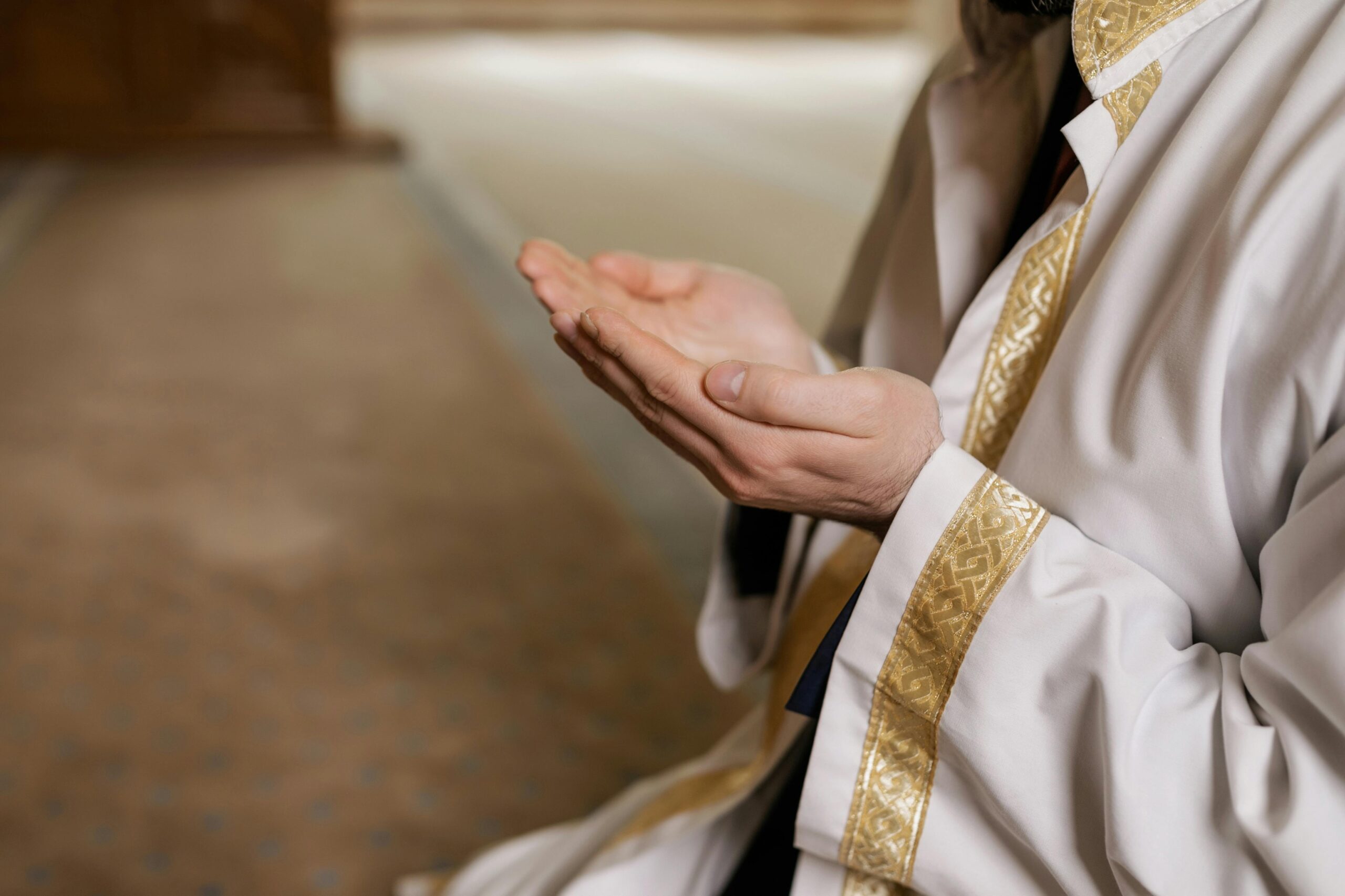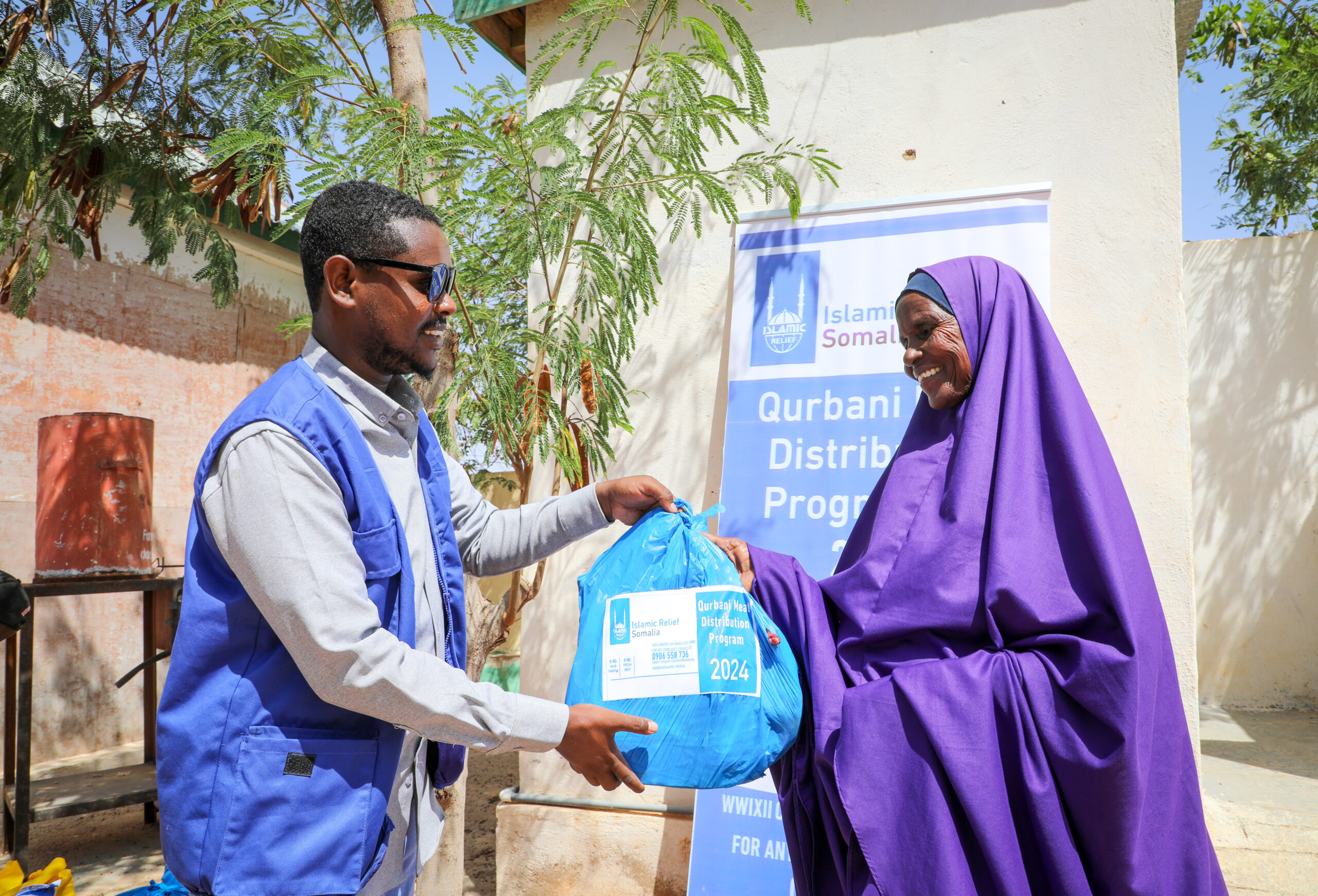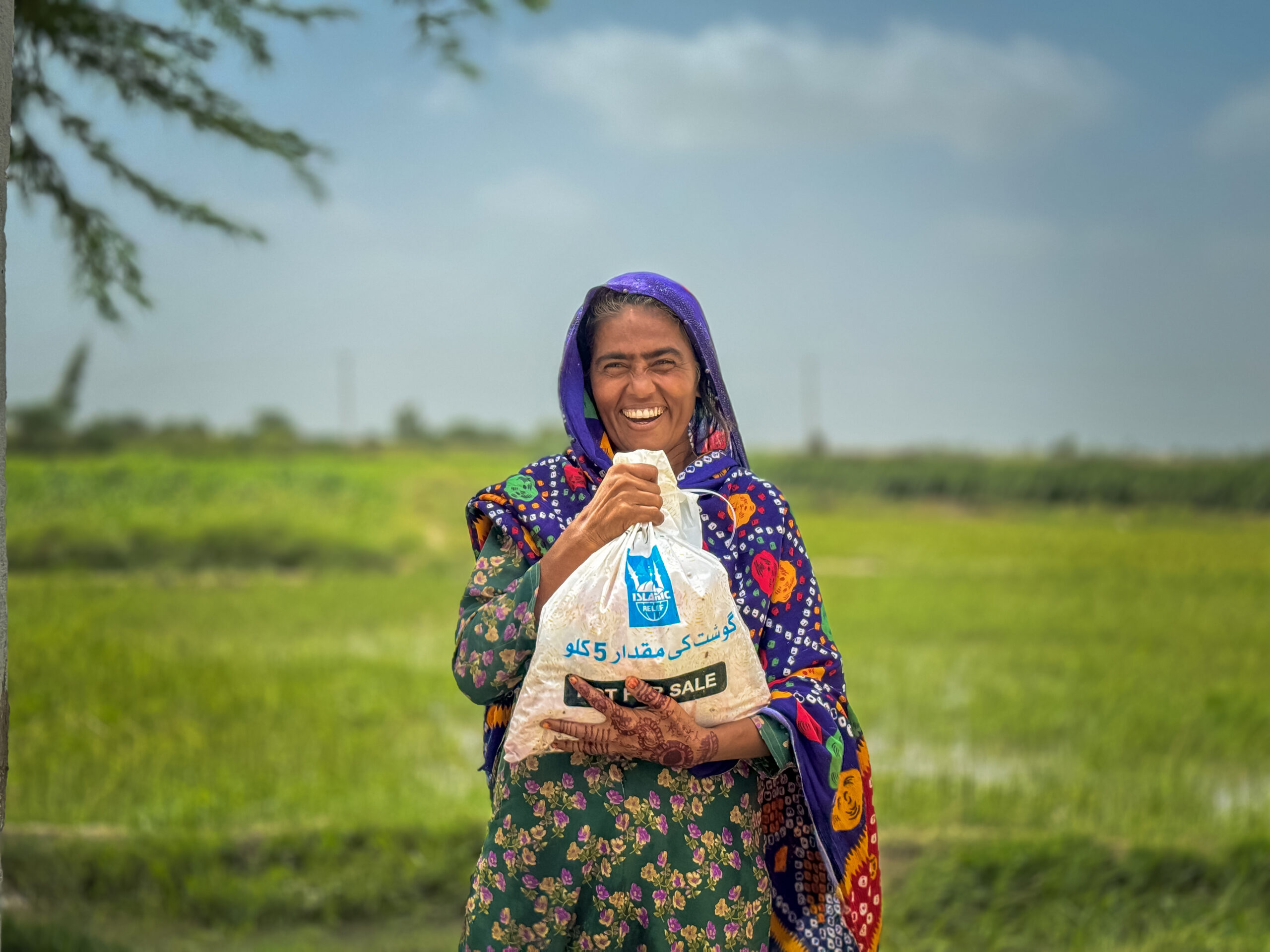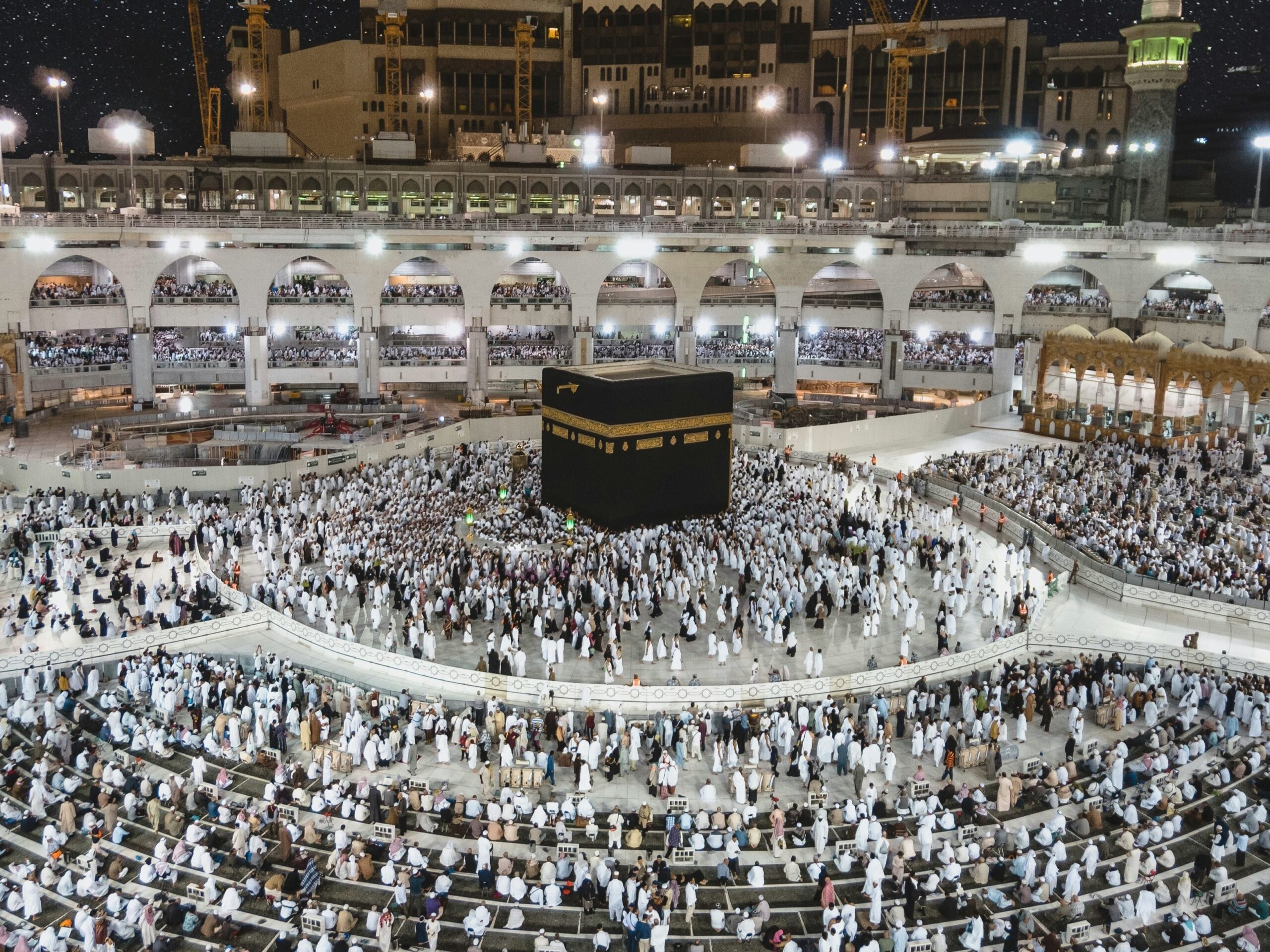
05.26.25
Hajj Guide: Step by step guide to performing Hajj
Each year, millions of Muslims from around the world travel to Makkah, Saudi Arabia, to perform Hajj.
The fifth pillar of Islam, Hajj is a sacred pilgrimage that must be performed by every Muslim at least once in their lifetime, so long as they are financially, physically and emotionally able to do so.
And [due] to Allah from the people is a pilgrimage to the House – for whoever is able to find thereto a way. But whoever disbelieves – then indeed, Allah is free from need of the worlds.
Qur’an 3:97
Hajj occurs during the holy month of Dhul Hijjah, the 12th month in the Islamic (Hijri) calendar. It falls between the 8th and 12th or 13th of Dhul Hijjah, depending on the sighting of the moon.
As the Hijri calendar is lunar (following the cycles of the moon), the corresponding date on our Gregorian calendars varies year by year. This year, Hajj 2025 is between Wednesday, June 4, 2025, and Monday, June 9, 2025.
For anyone preparing to go on the pilgrimage this year, it’s an incredibly exciting time. While it will certainly be a test of patience, with great spiritual, emotional, and physical challenges, it also offers an opportunity to cleanse oneself of their sins and draw closer to Allah (SWT).
As Prophet Muhammad (ﷺ) said:
Whoever performs Hajj for the sake of Allah and does not utter any obscene speech or do any evil deed, will go back (free of sin) as his mother bore him.
Bukhari and Muslim
To help review our knowledge of Hajj and its rituals, this handy and comprehensive guide is here to explore the different aspects of the holy pilgrimage: from its origin to how to perform it.
The Story Of Hajj
The origin of Hajj dates back to the time of Prophet Ibrahim (AS). This was thousands of years before the time of Prophet Muhammad (ﷺ).
Prophet Ibrahim (AS) built the Kaa’ba, the cubic-like structure in Masjid al-Haram. It is the qibla (direction) that Muslims pray towards and is known as Baitullah, or ‘the House of God’. It also plays an important part in the rituals of Hajj. However, it is not something that Muslims worship itself.
Because of Ibrahim (AS), Muslims are able to perform Hajj. A practice that remains the same as Prophet Muhammad (ﷺ) and Sahabah (companions) did hundreds of years ago, during the month of Dhul Hijjah in 632CE (10AH).
Hajar, Isma’il (AS) And The Well Of Zamzam
During his prophethood, Ibrahim (AS) encountered several trials. Challenges that became lessons to mankind, teaching us about the importance of devotion to Allah (SWT), sacrifice, faith and more.
These trials include the test of Ibrahim’s (AS) willingness to sacrifice his son for the sake of Allah (SWT), which is why Muslims perform Qurban on Eid Al Adha. Allah (SWT) also tested Ibrahim by instructing him to leave his wife Hajar and son Isma’il (AS) alone in the desert of Makkah. This is the test that provides the basis for Hajj.
Entrusting in Allah (SWT)’s plan, Ibrahim (AS), Hajar and Isma’il (AS), carried through with the command and endured the trials ahead. When the little food and water that they had soon ran out, Isma’il (AS), an infant at the time, cried of thirst. Hajar, desperately searching for water, ran between the nearby hills of Safa and Marwah in the hope of spotting someone who could help them.
Unable to find help, Hajar returned and found Isma’il (AS) striking and scraping the ground with his leg in distress. Suddenly, a spring burst forth from the barren desert. By Allah (SWT)’s command, a source of water from deep within the earth (that is still in use today), provided Hajar and Isma’il (AS) with water. This is known as the well of Zam Zam.
The water source provided Hajar with a means of trade and livelihood. It enables her to exchange food and other provisions with passing nomads for water. Soon, the site became prosperous. And when Ibrahim (AS), with Allah (SWT)’s permission, returned to his family in the desert, he was amazed to see the miracles that had unfolded for them. These were the fruits of their faith in Allah (SWT).
The Construction Of The Kaa’ba
At the site of the well of Zam Zam, Allah (SWT) commanded Ibrahim (AS) to build the Kaa’ba. He (AS) and his son Isma’il (AS) worked together to build its small stone structure. It marked a space for the sacred gathering of Muslims – all those who believed in the one God, Allah (SWT).
The Inception of Hajj (The Sacred Pilgrimage)
As time passed, the site of the miracle well of ZamZam and the Kaa’bah gave way for Makkah to become a thriving and prosperous settlement. Ibrahim (AS) returned to the site each year to offer his pilgrimage to Allah (SWT). In turn, years later, when Isma’il (AS) was given his prophethood, he continued the tradition. Thus, began the inception of the Hajj.
However, during the thousands of years that would pass, this would change. The site that was built to commemorate the lessons of Ibrahim’s (AS) trial, the miracle of Allah (SWT) and most importantly the belief in one God was later taken over by pagan Arabs and the worship of idols and spirits. It grew into a city for trade and the worship of pagan gods. And the Kaa’ba eventually came to house these false gods.
Until, thousands of years later, when Muhammad (ﷺ) became a prophet and came with the commandment to restore the Kaa’ba to its original purpose. The last of Allah’s (SWT) messengers, he established Islam in the land for mankind. He (ﷺ) likewise resumed Hajj, performing the first official pilgrimage with his companions in 632 CE, re-establishing the traditions started by the Prophet Ibrahim (AS).
Hajj As We Know It Today
Today, each year, over 2.5 million Muslims worldwide, of every race, class, and culture, travel to Makkah in Dhul Hijjah. Where they stand equal before Allah (SWT) – one’s status, race, culture, and wealth are irrelevant –as they fulfil the rites of Hajj.
These days, Hajj pilgrims travel to Makkah by land, air and sea days and weeks prior to the pilgrimage period. If you’re travelling from Australia, you are likely to fly to Saudi Arabia, touching down in Jeddah or Medina. From there you will travel with your Hajj group to Makkah.
Some people save up money their entire lives to be able to perform Hajj, while others are fortunate enough to fulfil it more than once. Regardless, each Muslim are only required to perform Hajj once in his or her lifetime, and only after meeting the requirements.
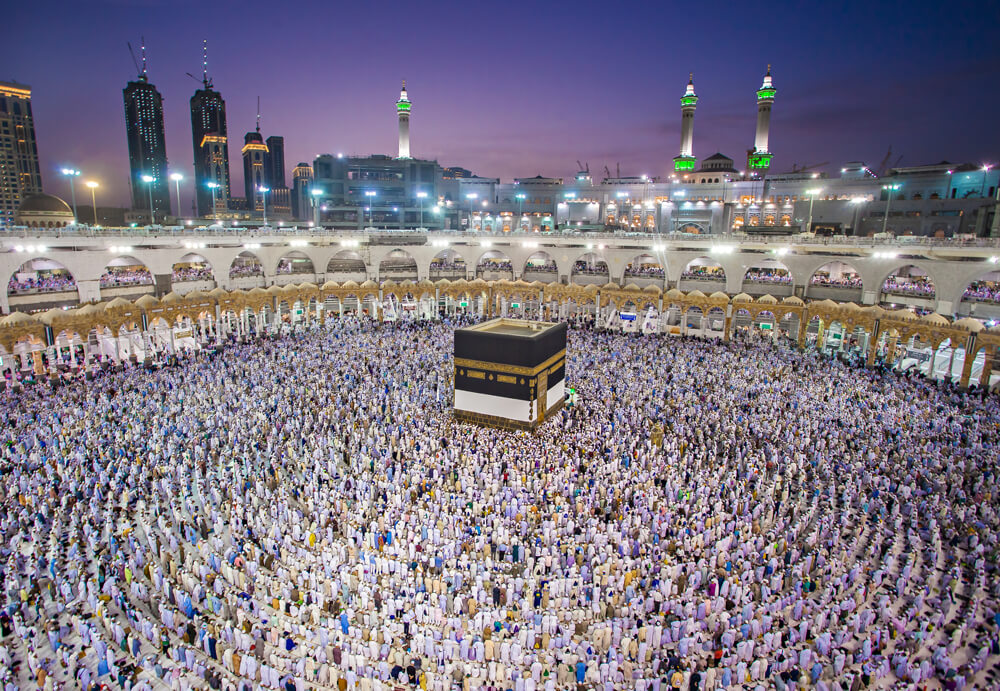
Who Is Eligible To Perform Hajj?
Hajj forms one of the five pillars of Islam. The other five pillars include the Shahada (the declaration that “There is no god but God, and Muhammad is the Messenger of God”), Salah (Prayer), Zakat (Almsgiving) and Sawm (Fasting).
As a pillar of the faith, Hajj is a spiritual duty for all Muslims. However, there are still certain conditions Muslims need to meet for it to be obligatory for them to perform the sacred pilgrimage.
Firstly, one must be an adult. While children may go to Hajj, they are not required to. Secondly, one must be healthy. The very weak, sick, elderly, or otherwise physically incapable Muslims are exempt from having to perform the pilgrimage.
Thirdly, one must be financially able to perform Hajj. A person in debt is not obliged to perform Hajj until he has cleared it. However, if one is in debt, one may still perform Hajj as long as their creditor permits it, they have time to pay off the debt and performing Hajj does not affect their ability to pay it off.
When Do I Perform Hajj?
In the Islamic tradition, Muslims use the Hijri calendar which follows the cycle of the moon. This contrasts with the more commonly used Gregorian calendar, which calculates dates using the sun.
Hajj occurs each year between the 8th to 12th or 13th of Dhul Hijjah. However, the corresponding Gregorian dates differ year to year as the lunar calendar appears to shift forward approximately 11-12 days.
How Do I Perform Hajj?
There are three forms of Hajj: Tamattu, Ifraad and Qiran. In this guide, we will use the Tamattu, the form that the Prophet Muhammad (ﷺ) encouraged the Muslims to perform.
A Step-By-Step Guide To Performing Hajj
Preparation and Intention
Before you arrive at Makkah to begin Hajj, it’s important to make your intention (niyyah) within your heart. The intention must be to perform the Hajj for the sake of Allah (SWT) alone. It should not be done with the intention of being seen by others or for worldly gain. Only for a desire for good in the Hereafter.
Entering The State Of Ihram
Next, you’ll enter into the state of Ihram (ritual purity). The rules around the clothing of Ihram are extremely simple, yet strict and must be adhered to.
For men, this means wearing the designated white cloth. One piece should be wrapped around your shoulder and one around your waist. Ladies may wear any clothing of their choice but should ensure they observe the rules of Hijab. Face coverings, however, are not permitted. Fully covering shoes are also not permitted. Both women and men must wear sandals for footwear.
Whilst in the state of Ihram, we should also be particularly mindful of our behaviour and words. We should avoid smoking, engaging in sexual relations, swearing, shaving our hair, and cutting our nails. Fighting, arguing, hunting, killing, or unjustifiably breaking anything while in the state Ihram is also forbidden.
We must also not use scented products such as perfumes, moisturisers, makeup, or soaps. We, however, substitute them for unscented toiletries which are permissible to use.
Tip: Carry spare Ihram clothing if you can. Likewise, invest in a decent pair of trekking sandals. They tend to be the most comfortable and practical, given that you will be walking long distances on tarmac as well as gravel. Try and wear-in your sandals before you depart for Saudi so that you don’t break out in blisters or face discomfort once you’re there.
Upon arriving in Makkah, get ready for the biggest spiritual journey of your life! First, you must perform your Umrah. This means doing the rites of Tawaf and Sa’i, as outlined in the next steps.
Tawaf x 7
Tawaf is one of the principal rites of the pilgrimage. It refers to walking in circles around the Kaa’bah in an anti-clockwise motion.
One Tawaf is made up of seven complete circuits. Each one starts and ends at the black stone, situated within the Kaa’bah.
In addition to your Tawaf, you can also offer voluntary prayers. To thank Allah (SWT) for arriving safely and mark the start of this incredibly special spiritual journey.
Safa and Marwa
After you’ve performed your Tawaf, you’ll then perform what’s known as Sa’i (walking and running between the two hills of Safa and Marwa).
You’ll begin the Sa’i on the hill of Safa and walk towards the hill of Marwa. You will eventually see the green marker, at which point you will run until the next green marker and continue walking until you reach Marwa. This completes one lap.
You will then return to Safa to complete your second lap. Your Sa’i is complete once you have performed a total of seven laps between the hills of Safa and Marwa.
This is an important ritual in memory of Prophet Ibrahim’s (AS) wife Hajar, and her struggle in the desert in search of water for her son Prophet Isma’il (AS). Sa’i symbolises the ongoing struggle that we encounter throughout our lives, as Hajar experienced herself.
Clip/Shave Hair (Umrah Ends)
Once Sa’i is complete, men will have their hair clipped or shaved, while women will clip their hair to the length of a fingertip. This marks the completion of your umrah, allowing you to leave Ihram, until the 8th of Dhul Hijjah.
Tip: Be very patient here. You’ll likely be tired from tawaf. You also might notice fellow pilgrims in a hurry to complete the Sa’i. Feel free to take your time. Take regular breaks, and drink Zam Zam water which is available between Safa and Marwa.
Resting and praying
Now that you’ve performed your Umrah, for the rest of this blessed month, you’ll stay in Makkah to complete your spiritual journey of Hajj, surrounded by your fellow Muslim sisters and brothers, SubhanAllah! Make sure to get plenty of rest and make the best use of your time by performing sincere acts of worship. Your Hajj will begin on the 8th of Dhul Hijjah.
Re-entering State of Ihram (Day 1/8th Dhul Hijjah)
Fulfilling your sacred obligation of Hajj will be the most spiritual period of your life Insha’Allah (God willing), filled with blessings and forgiveness from Allah (SWT)! The 8th day of Dhul Hijjah marks the beginning of the days of Hajj and the next stage of your spiritual journey. You’ll purify yourself and enter the state of Ihram once again.
Once you’re all set to enter the Ihram, you’ll begin reciting the following invocation called the Talbiyah:
Labbayka Allāhumma labbayk. Labbayk lā shareeka laka labbayk. Inna al-ḥamda, wa n-‘imata, Laka wal mulk. Lā shareeka lak.
لَبَّيْكَ اللَّهُمَّ لَبَّيْكَ، لَبَّيْكَ لاَ شَرِيْكَ لَكَ لَبَّيْكَ، إِنَّ الْحَمْدَ وَالنِّعْمَةَ لَكَ وَالْمُلْكَ لاَشَرِيْكَ لَكَ
“Here I am, O Allah, here I am, here I am. You have no partner, here I am. Verily all praise and blessings are Yours, and all sovereignty. You have no partner.”
You will then proceed with your Hajj group to the neighbourhood of Mina in Makkah, located roughly eight kilometres from the centre of Makkah.
Tip: Carry some essentials such as unscented sun cream, moisturiser, Vaseline and soap. Sun cream is particularly handy, especially if you have no hair as it is not permissible for men to cover their head or face whilst in Ihram. Vaseline is also particularly valuable for both women and men to protect against painful rashes that may occur as a result of constant walking. All of these are readily available in Saudi Arabia.
Arrive At Mina
Once you arrive in the tent city (neighbourhood) of Mina, you’ll settle into your allocated tent. Here you’ll pray Salah (obligatory prayers), including Dhuhr, Asr, Maghrib, ‘Isha and Fajr, shortening your four-unit prayers to two units each, without combining them, as stated in the Qu’ran.
You’ll spend the night and pray to Allah (SWT), reading the Qur’an and preparing for day two. It’s an important time for spiritual reflection and devotion, so try and make the most of this special night.
Tip: Be patient here, as space inside the tents can be very tight. You might find yourself very close to fellow pilgrims. The weather is also likely to be very hot, so remember to keep yourself hydrated. The Saudi authorities have installed cold water stations close to all tents, so familiarise yourself with your surroundings.
You may also notice that Hajj authority workers regularly stock up on complimentary cold drinks in cooler boxes next to your tent. They’re there for you to consume, so enjoy them to quench your thirst, but don’t forget the spiritual purpose of being there.
Day of ‘Arafah (Day 2/9th Dhul Hijjah)
After sunrise in Mina, you’ll then head to the plains of ‘Arafah, where you should be spending your time in contemplation and prayer. This includes reciting Istaghfar (asking for forgiveness) and making supplications – marking the Day of ‘Arafah when we ask Allah (SWT) for forgiveness for our sins.
Upon reaching the plains of Mount ‘Arafah, pilgrims observe shortened Dhuhr and Asr prayers combined (two Rakat instead of four). However, according to Abu Hanifa, the combining of Dhur and Asr is only valid if one prays behind the Imam in the Masjid. Therefore if one were to pray in the tent, then they should not combine both salah.
On this day, there will be a sermon delivered from Masjid al-Nimra on Mount ‘Arafah. Try to listen to the Khutbah (sermon) if possible. Your group may also facilitate an English translation of this sermon.
Tip: Don’t be tempted to exhaust your energy and trek up Mount ‘Arafah, also known as Jabal al-Rahmah, on this day. Jabal al-Rahmah is the hill from where the Prophet Muhammad ﷺ) delivered his sermon. There is no authentic source to suggest any benefit in trekking the hill itself or to undertake this climb as a religious ritual.
Importance of ‘Arafah
The day of ‘Arafah is one of the most important days for Muslims across the world. Allah (SWT) refers to the Day of ‘Arafah in Surah al-Maidah as the Day on which He perfected His religion, completed His favours upon His beloved Prophet Muhammad (ﷺ) and approved Islam as a way of life!
The Prophet (ﷺ) also said:
“There is no day on which Allah frees people from the Fire more so than on the day of ‘Arafah. He comes close to those (people standing on ‘Arafah), and then He reveals before His Angels saying, ‘What are these people seeking.”
Muslim
So, be sure to stand on the plains of ‘Arafah and make lots of Du’a (supplication), focusing your energy on Allah (SWT), asking Him for forgiveness and blessings for you and your family. Don’t forget to include your friends, relatives, neighbours as well as the wider Ummah (community) in your Du’a on this special day.
Arrive in Muzdalifah
After sunset, you’ll depart ‘Arafah and head to Muzdalifah – an open plain between Mina and ‘Arafah. Once you reach Muzdalifah you’ll perform your Maghrib and ‘Isha Salah, one after the other, shortening the ‘Isha Salah to two Rakat.
As Abdullah ibn Umar (RA) narrates:
“The Prophet (peace and blessings be upon him) offered the Maghrib and ‘Isha prayers together at Muzdalifah with a separate Iqamah (second call to prayer) for each of them and did not offer any optional prayer in between them or after each of them.”
Sahih Bukhari
Afterwards, you can then spend the night in worship or resting. The Prophet (ﷺ) went to sleep until shortly before Fajr, choosing not to engage in night worship as he normally did. So, follow the Sunnah. Don’t be tempted to exhaust yourself but rest instead. You have a long day ahead of you!
While in Muzdalifah, you may also collect pebbles to perform Rami (the stoning of the devil) over the next three days. You can collect the pebbles from anywhere in Mina.
The size of the pebbles should be similar to the size of date stones/seeds. You will need a total of 49 pebbles. However, it is better to pick up 21 more pebbles as a precautionary measure. When you proceed to the phases of throwing the pebbles at the Jamarat (the stone pillars), you may miss the target, or some pebbles may fall from your hand. Therefore, it is better to have more than to be short.
Tip: At Muzdalifah, you will stay under the night sky. There are no tents or other accommodation facilities here. Although there are plenty of lights, it is still fairly dark. Try to stay near your group. It’s very easy to get lost among the thousands of pilgrims.
Toilets and Wudhu facilities are also available in Muzdalifah. We highly recommend you use the toilets and freshen up before you leave ‘Arafah. However, they will also likely be crowded so remember to be patient.
Rami and Hady (Day 3/10th Dhul Hijjah & start of Eid al-Adha)
The 10th of Dhul Hijjah is also called the Yawm al-Nahr, or the Day of Sacrifice (Qurbani).
After performing Fajr Salah you will depart Muzdalifah and go back towards Mina. Remember to continuously recite the Talbiyah.
On this day, Pilgrims perform the Hady (sacrificial animal) and also commence the first of three days “stoning of the devil” rite or Rami. Muslims around the world also offer Qurban (Qurbani or Udhiyah) during this time and begin the four-day festival of Eid al-Adha. We know this from this verse in the Qur’an:
“And when you are safe, then, whoever avails the advantage of the ‘Umrah along with the Hajj shall make an offering of whatever animal is available. However, any one who finds none shall fast for three days during Hajj, and for seven days when you return; thus they are ten in all. This is for him whose family folk are not residents of Al-Masjid-ul-Harām.”
Qur’an 2:196
Origin Of Rami (The Stoning Of The Devil)
The stoning of the Jamarat (also referred to as the ‘stoning of the devil’) is a ritual carried out by Hajj pilgrims whereby pebbles are thrown at three stone structures in Mina across three days.
The act of throwing stones at the Jamarat is known as Rami. The ritual of Rami is symbolic of the actions of Ibrahim (AS) when he was faced with the trial of having to sacrifice his son, Isma’il (AS) upon the commandment of Allah (SWT).
On the way to carry out the commandment, Iblis (Satan) repeatedly tried to tempt Ibrahim (AS) into disobeying Allah (SWT). As Ibrahim (AS) reached Jamarat al-Aqaba, Allah (SWT) ordered Angel Jibreel (AS) to instruct Ibrahim (AS) to throw seven stones at Iblis. He obliged, and Iblis fled immediately. The three Jamarat indicate the three places where Iblis tried to dissuade Ibrahim (AS) from obeying the command of Allah. However, the pillars do not contain Iblis, as many people are wrongly led to believe.
How To Perform The Rami (The Stoning Of The Devil)
On the 10th, 11th, and 12th day of Dhul Hijjah, you will perform Rami (the stoning of the devil). The size of the pebbles should be similar to the size of date stones or seeds. You will need a total of 49 pebbles.
You’ll need a certain number of pebbles for each of the three days. The breakdown is as follows:
- 7 pebbles for the 10th of Dhul Hijjah
- 21 pebbles for the 11th of Dhul Hijjah
- 21 pebbles for the 12th of Dhul Hijjah
Try to carry four small pouches per person for your pebbles. Coin bags are a good size and convenient to carry. Use the four pouches to group pebbles according to the breakdown above.
Once you reach the Jamarat, you will head to Jamarat al-Aqaba, the largest pillar. Here, you will throw the first seven pebbles at the concrete pillar. You will only pelt this one pillar on the first day.
Upon each throw, you’ll say the Takbir:
Allāhu ‘Akbar
اللهُ أَكْبَرُ
Allah is Greater
Tip: Don’t rush to perform the Rami. The Hajj authority will most likely allocate a set time for your group to go and perform Rami. They do this to minimise overcrowding and the risk to pilgrims.
Try not to get angry and throw your sandals or other valuable possessions at the pillars. Iblis is not contained within the pillar, so you’ll only lose your valuables and there is no benefit in doing so!
Qurbani and Eid al-Adha
The festival of Eid al-Adha, or the Feast of Sacrifice, is also celebrated by Muslims around the world not performing Hajj on the 10th Dhul Hijjah. By offering Qurbani (sacrifice), Muslims commemorate Prophet Ibrahim’s (AS) willingness to sacrifice his son Isma’il (AS) upon the commandment of Allah (SWT).
Shaving The Head (Day 4/11th Dhul Hijjah)
After offering the Hady, male pilgrims will shave or trim their hair, as the Prophet Muhammad (ﷺ) did. For women, they will trim their hair by the length of a fingertip.
Now you are allowed to leave the state of Ihram and wear comfortable clothing. You are also allowed to resume otherwise Halal activities forbidden during the state of Ihram, except for sexual intimacy. It is Sunnah to apply perfume as the Prophet Muhammad (ﷺ) smelt strongly of musk at this point.
Tip: Use disposable blades to shave each other’s head within your group. If that’s not possible, a number of barbers in Mina will shave your head for a price. Ensure that the barbers use new blades to avoid infection.
Tawaf al-Ifadha and Saai’ (Day 5/12th Dhul Hijjah)
You will now go to Makkah to perform Tawaf al-Ifadha and then another circuit of Sa’i as part of your Hajj rituals.
Tawaf al-Ifada and Sa’i are obligatory. You must perform the tawaf al-Ifadha and the Sa’i after the Rami, the Qurbani (sacrifice) and shaving (or trimming) of the head.
With the completion of the Tawaf and Sa’i, you are then allowed to relax and do everything that was lawful before entering the Ihram, including engaging in marital relations.
You will, however, return to your tents in Mina and continue with the remaining rituals of Hajj.
Tip: The Tawaf area will be extremely crowded during this time. Try to use the upper levels of the Haram or the roof. You might want to do this around midnight when it tends to be quieter.
The Second Day of Rami
On the 11th Dhul Hijjah, you will proceed to your second day of Rami (the stoning of the devil).
On this occasion, you pelt each of the three pillars in order. You will begin with Jamarah al-Ula (the small pillar), then Jamarah al-Wusta (the second/middle pillar) and finally, Jamarah al-Aqaba (the third/large pillar). You stop after the first and second Jamarat to make Du’a facing the qibla. Each one should be stoned with seven consecutive pebbles accompanied by the Takbir. Remember to take your spare pebbles with you in case you lose some!
Spend the night in Mina
Once your second Rami is completed, you will return to your camp in Mina and spend the rest of the day and night in worship, making the most of the remaining time you have.
The Third Day of Rami
On the afternoon of the 12th Dhul Hijjah, you’ll have your final batch of pebbles (21 pebbles) ready to repeat the same steps as the previous day.
Tawaf al-Wida (The Farewell Tawaf)
You now have only one step left to perform before completing Hajj. This is the farewell Tawaf – the last rite Muslims must perform.
This Tawaf is Wajib (obligatory) according to Hanafis, Shafi’is and Hanbalis but Sunnah according to Malikis. It must be performed before leaving the boundaries of the Haram. Omitting this Tawaf, without a valid reason, is not deemed lawful in Islam.
Ibn Abbas (RA) narrated:
“The people were ordered to perform the Tawaf al-Wida as the last thing before leaving (Makkah), except the menstruating women who were excused. “
Bukhari
For this Tawaf, you will complete seven laps of Tawaf. Then perform two Rakat of Salah and drink Zam Zam water. There is no Sa’i or shaving/trimming of the head after this Tawaf.
Hajj Mabrook! You’ve now completed your Hajj!
For those of us who are unable to travel and perform Hajj this year, don’t despair! The best ten days of the year are the 1st to the 10th of Dhul Hijjah.
These days are a second chance to earn the mercy and forgiveness of Allah (SWT) after Ramadan. We should use this blessed time to do more good deeds. These can be giving charity, connecting with the Qur’an, helping out within the community and more. It is also important to enhance our obligatory acts of worship by being mindful of our prayers and ensuring we pay our Zakat on time.
Our Prophet (ﷺ) also said:
There are no days that are greater before Allah or in which good deeds are more beloved to Him, than these ten days, so recite a great deal of Tahleel (saying of la illaaha illa Allah), Takbeer (saying of Allahu Akbar) and Tahmeed (Alhamdulillah) during them.
Ahmad
Thus, the first 10 days of Dhul Hijjah is an ideal time to make du’a for Allah (SWT) and remember Him as much as we can. It’s also highly recommended for us to fast during these ten, especially on the day of ‘Arafah, as “it will expiate the sins of the previous and upcoming years.” (Sahih Muslim).
Qurban (Qurbani, Udhiyah on Eid Al-Adha for non-travellers is Sunnah muakkadah (confirmed Sunnah) according to most scholars and Waajib (a religious duty) according to the Hanafis. If you can afford to offer the sacrifice, then you are encouraged to do so. This would be in remembrance of the struggle and dedication of Prophet Ibrahim (AS) to Allah (SWT). It also supports a struggling family, as a third of the sacrifice goes to the needy.
Regardless of whether or not you’ve been able to attend Hajj, the month of Dhul Hijjah holds countless blessings for Muslims around the world! So let us make the most of these best 10 days of Dhul Hijjah, and seek to achieve a similar reward as those going to Hajj during this most blessed time!
This Dhul Hijjah, Share Your Blessings
Help the world’s most vulnerable families enjoy their Eid when you give Qurban with Islamic Relief.

